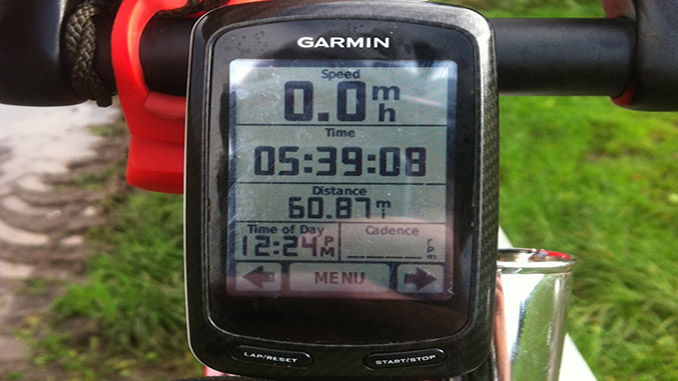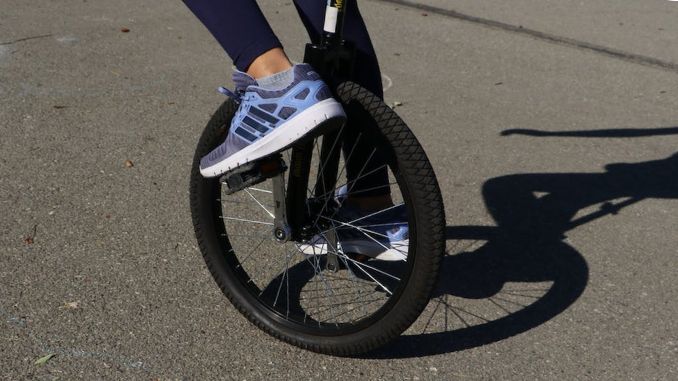Hello and welcome, fellow unicyclists! You may have heard the term “cadence” thrown around by more experienced riders. But what exactly is unicycle cadence, and why does it matter? In this article, we’ll explore the unicycle cadence, including what it is, why it’s important, and how to measure and improve it.
Contents
- What is Unicycle Cadence?
- Why is Unicycle Cadence Important?
- How to Measure Unicycle Cadence
- Factors that Affect Unicycle Cadence
- Training to Improve Unicycle Cadence
- Common Mistakes to Avoid When Improving Unicycle Cadence
- Tips for Maintaining a Consistent Unicycle Cadence
- The Benefits of Improving Unicycle Cadence
- Frequently Asked Questions
- Conclusion
What is Unicycle Cadence?
In simple terms, unicycle cadence refers to the rate at which a unicyclist pedals. It’s measured in revolutions per minute (RPM), just like a bicycle. A higher cadence means more pedal strokes per minute, while a lower cadence means fewer pedal strokes per minute.
Related:
- What Are the Muscles Targeted by Unicycling?
- Frequent Injuries Associated with Unicycling: What You Need to Know
Why is Unicycle Cadence Important?
Unicycle cadence is important for several reasons. First and foremost, it affects your speed and efficiency on the unicycle. When you pedal at a higher cadence, you’ll cover more distance per minute and be able to go faster.
However, pedaling at a higher cadence also requires more energy and can lead to fatigue more quickly. A lower cadence may feel more comfortable, but it can be less efficient and lead to slower speeds.
In addition to affecting speed and efficiency, unicycle cadence also plays a role in technique and form. A consistent and controlled cadence can help you maintain good posture and balance on the unicycle, while an erratic cadence can lead to wobbling and instability.
How to Measure Unicycle Cadence
Measuring unicycle cadence is fairly straightforward. You’ll need a cadence sensor, which can be attached to the unicycle’s crank arm. Most cadence sensors are wireless and communicate with a bike computer or smartphone app.
Once you have a cadence sensor installed, simply start pedaling and the sensor will measure your cadence in RPM. There are other ways to measure unicycle cadence, including:
- Smartphone Apps – There are several smartphone apps available that can measure cadence using the phone’s built-in sensors.
- Stopwatch – Riders can also use a stopwatch to measure their cadence. Simply count the number of wheel revolutions for a set amount of time and multiply by the appropriate factor to get your RPM.
Note that cadence can vary depending on terrain, fatigue, and other factors, so it’s best to take multiple measurements under different conditions to get an accurate picture of your average cadence.

Factors that Affect Unicycle Cadence
There are several factors that can affect unicycle cadence, including terrain, fatigue, gear ratio, and riding style.
Terrain: The type of terrain you’re riding on can have a big impact on your cadence. Uphill sections may require a lower cadence to conserve energy, while downhill sections may allow for a higher cadence.
Fatigue: As you tire, your cadence may naturally decrease. It’s important to listen to your body and adjust your cadence accordingly to avoid exhaustion and injury.
Gear ratio: The gear ratio of your unicycle can also affect your cadence. A higher gear ratio will require more effort to maintain a high cadence, while a lower gear ratio may allow for a higher cadence with less effort.
Tire Pressure: The tire pressure of your unicycle can also affect your cadence. A tire with higher pressure will result in a faster cadence, while a tire with lower pressure will result in a slower cadence.
Riding style: Finally, your riding style can also affect your cadence. Some riders prefer a slower, more controlled cadence, while others prefer a faster, more aggressive cadence.
Training to Improve Unicycle Cadence
If you’re looking to improve your unicycle cadence, there are several training techniques you can try. Here are a few to get you started:
Interval training: Interval training involves alternating between high-intensity bursts of pedaling and periods of rest or lower intensity. This can help improve your overall speed and endurance.
Hill repeats: Find a hill or incline and ride up and down it repeatedly, focusing on maintaining a consistent cadence throughout. This can help improve your stamina and power.
High-Cadence Drills: To improve your cadence, you need to practice riding at a high cadence. Start by riding at a comfortable cadence for a few minutes, then gradually increase your cadence. Aim for a cadence of around 80-100 RPMs. You can use a metronome to help you keep track of your cadence.
Plyometric exercises: Plyometric exercises, such as planks, sit-ups, jumping, or hopping, can help improve your leg strength and power, leading to a higher cadence.
Common Mistakes to Avoid When Improving Unicycle Cadence
When working to improve your unicycle cadence, there are a few common mistakes to avoid:
Overtraining: It’s important to listen to your body and avoid overtraining, which can lead to fatigue and injury.
Ignoring form and technique: While it’s important to focus on cadence, don’t forget to also pay attention to your form and technique. A controlled and stable riding position can help improve your cadence and efficiency.
Neglecting rest and recovery: Rest and recovery are just as important as training when it comes to improving cadence. Make sure to give your body time to recover between training sessions.
Tips for Maintaining a Consistent Unicycle Cadence
Once you’ve improved your unicycle cadence, it’s important to maintain it. Here are some tips to help you do so:
Focus on form and technique: As mentioned earlier, good form and technique can help you maintain a consistent cadence. Make sure to keep your body stable and controlled while riding.
Stay relaxed: The key to maintaining a high cadence is to stay relaxed. Keep your upper body relaxed and focus on using your leg muscles to power the pedals.
Use the right gear: The right gear can make a big difference in your cadence. Make sure you’re using a gear that allows you to maintain a steady cadence without too much strain.
Use a metronome: A metronome can be a helpful tool for maintaining a consistent cadence. Set it to your desired cadence and try to match your pedaling to the beat.
Listen to your body: Pay attention to how your body feels while riding and adjust your cadence accordingly. If you’re feeling fatigued, slow down your cadence to conserve energy.
The Benefits of Improving Unicycle Cadence
Improving your unicycle cadence can have several benefits, including:
- Increased speed and efficiency Improved stamina and endurance
- Better form and technique
- Reduced risk of injury
- Overall, improving your unicycle cadence can help you become a stronger, more skilled rider.
Frequently Asked Questions
What is a good cadence for unicycling?
There is no one “good” cadence for unicycling, as it can vary based on the rider’s skill level, terrain, and personal preference. However, a cadence of around 80-90 RPM is generally considered a good starting point for most riders.
How can I improve my cadence?
Practicing riding at a higher cadence and experimenting with gear ratios can help improve cadence over time. It’s also important to maintain good posture and pedal form to reduce wasted energy and increase efficiency.
What’s the difference between unicycle cadence and speed?
Unicycle cadence refers to the rate at which you pedal your unicycle, measured in RPM. Unicycle speed, on the other hand, refers to how fast you’re moving on your unicycle, measured in miles per hour (mph) or kilometers per hour (km/h). While cadence affects speed, they are not the same thing.
Do different unicycling disciplines require different cadences?
Yes, different unicycling disciplines may require different cadences depending on the type of riding and the terrain. For example, distance riders may aim for a higher cadence to maintain an efficient pace, while trials riders may need a lower cadence to generate more power for tricks and jump.
Can I use a regular bike computer to measure my unicycle cadence?
Yes, you can use a regular bike computer to measure your unicycle cadence by attaching a cadence sensor to your unicycle’s crank arm or pedal. However, you’ll need to ensure that the sensor is compatible with your computer and that you adjust the settings accordingly.
Conclusion
Unicycle cadence may seem like a small detail, but it can have a big impact on your riding. Maintaining a consistent and efficient cadence is important for maximizing your speed, conserving energy, and reducing the risk of injury.
Remember, the key to improving your unicycle cadence is consistent practice and dedication. By measuring your cadence, monitoring your progress, and implementing the tips and exercises we’ve shared, you’ll be well on your way to becoming a master unicyclist.
So what are you waiting for? It’s time to hop on your unicycle and start pedaling! Don’t forget to measure your cadence, set goals, and have fun. Happy riding!


